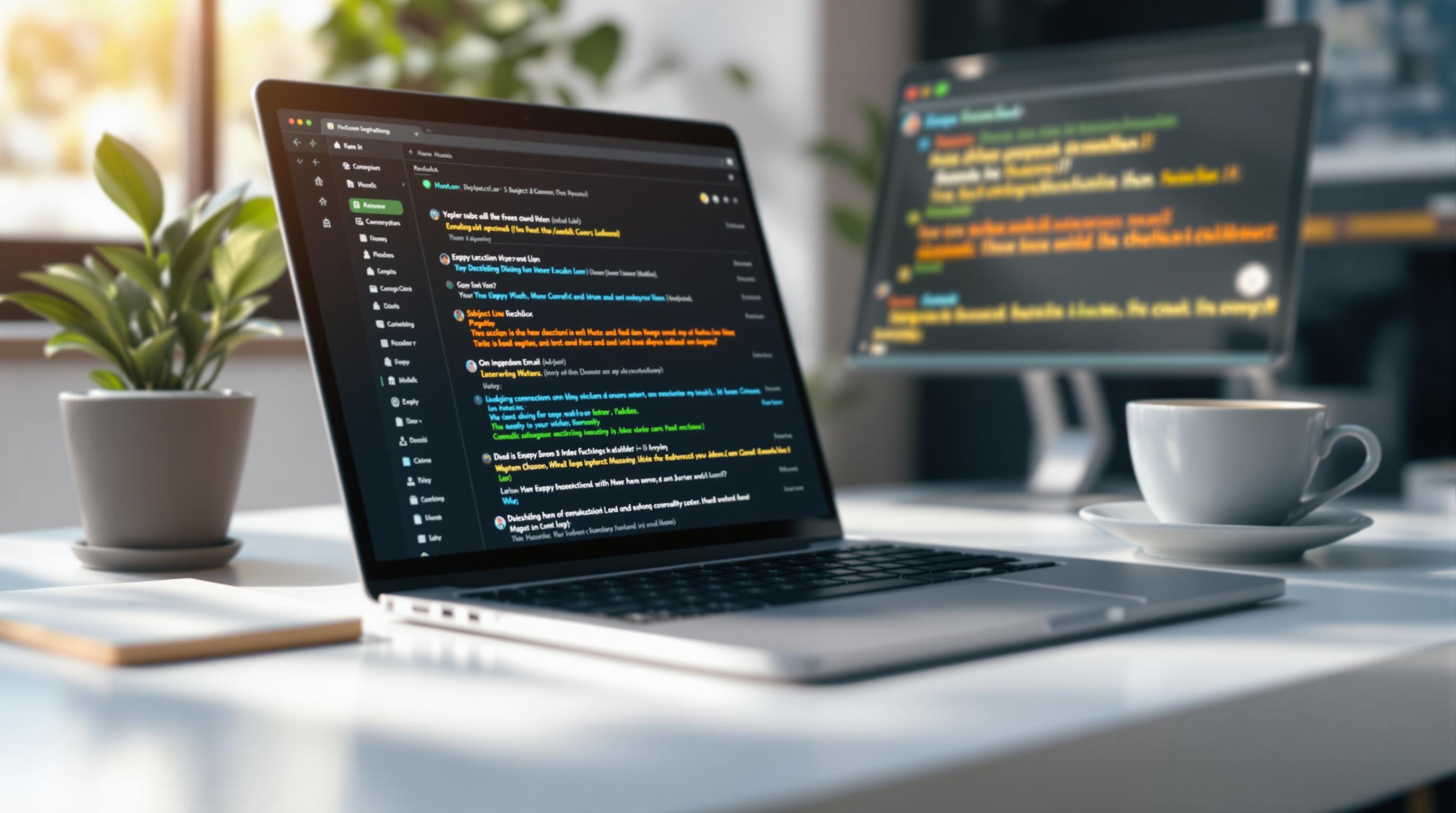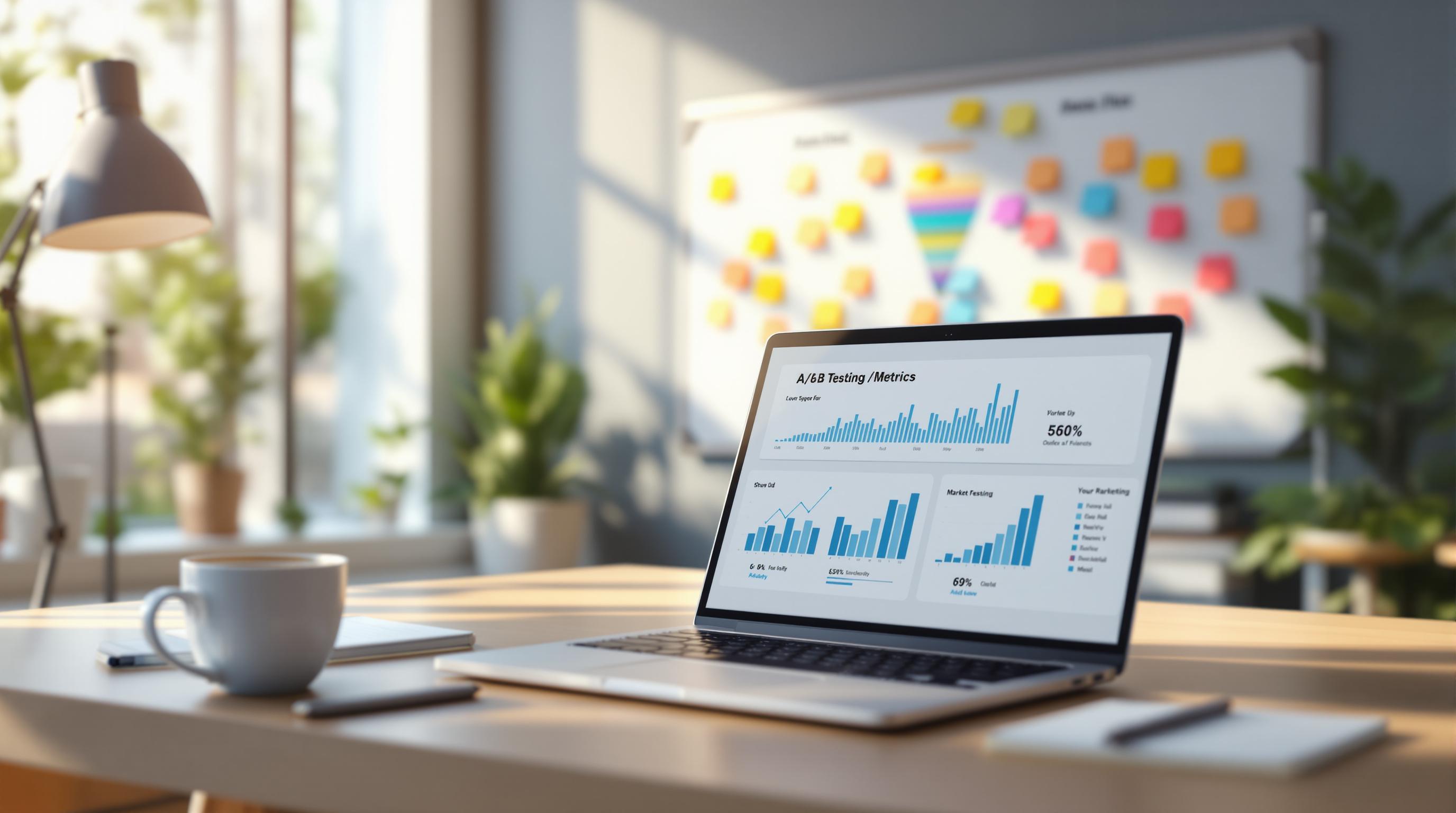Engagement triggers are actions or events that prompt automated responses, helping guide customers through marketing funnels more effectively. These triggers improve conversion rates by delivering personalized, timely content based on user behavior, such as downloading resources, abandoning carts, or opening emails. Key benefits include:
- Personalized Journeys: Tailored follow-ups keep users engaged.
- Automation: Saves time by handling repetitive tasks.
- Performance Tracking: Metrics like open rates and conversions help refine strategies.
Quick Tip: Start with simple triggers like cart recovery emails or follow-ups for form submissions. Use automation tools to streamline workflows and monitor results for continuous improvement.
How Engagement Triggers Improve Marketing Funnels
Crafting Tailored Customer Experiences
Imagine this: someone downloads an eBook from your site. A trigger can instantly send them follow-up content that matches their interests, guiding them along a personalized path. These triggers deliver the right information at just the right time, boosting engagement potential [1]. Once these journeys are mapped out, automation ensures they operate efficiently - even as your audience grows.
Leveraging Automation to Save Time
Automation tools handle time-consuming tasks like updating CRM records, segmenting audiences, and sending customized emails. This frees up marketers to concentrate on strategic planning [2]. With these tools in place, teams can focus on improving their funnels instead of getting bogged down in repetitive work.
Optimizing Funnel Performance
By tracking metrics like email open rates and conversions, marketers can pinpoint what’s working and where prospects are dropping off. This data helps refine the funnel and make smarter adjustments [3]. For example:
- Highlight content gaps that need attention
- Fine-tune trigger timing and sequences
- Boost conversion rates with targeted updates
For more insights and tools to enhance your trigger-based marketing system, check out the Marketing Funnels Directory.
Create a Customer Journey Automation
Steps to Add Engagement Triggers to Your Funnels
Adding engagement triggers can help create a smoother customer journey and boost your conversion rates.
Finding the Right Engagement Triggers
Use customer data to pinpoint key interaction moments that show interest or intent to buy. Here are some common examples:
- Resource Downloads: Send a follow-up content series.
- Cart Abandonment: Trigger a recovery email with a special offer.
- Multiple Page Views: Share targeted product details.
- Form Submissions: Initiate personalized outreach immediately.
Setting Up Triggers with Tools
Marketing automation platforms make it easier to set up and manage triggers with pre-built workflows and integrations.
"Trigger-based marketing emails are 497% more effective than blast emails" [2]
Steps to set up your triggers effectively:
- Pick a marketing automation platform that works well with your existing tools.
- Plan out your trigger-response workflows before starting the setup.
- Test each trigger sequence thoroughly to ensure everything works smoothly.
Tracking and Improving Triggers
Monitor key metrics to measure the performance of your triggers, such as:
- Response rates to triggered messages.
- Time taken from trigger to conversion.
- How customers move through your funnel stages.
Evaluate the timing, content, and delivery channels for each trigger. Adjust underperforming triggers to improve results. For more guidance and tools, check out the Marketing Funnels Directory, which offers detailed resources and vendor suggestions tailored to different funnel needs.
Once your triggers are running efficiently, you can dive into more advanced strategies to take your funnel to the next level.
sbb-itb-a84ebc4
Advanced Ways to Use Engagement Triggers
Building Funnels with Small Steps
Creating effective funnels is all about balancing engagement with timing. By encouraging small, incremental actions, you can guide users through a natural progression that builds trust and keeps their interest. Each of these smaller actions, or micro-conversions, serves as a point where you can personalize and follow up at just the right moment.
Here are some examples of micro-conversions that can act as trigger points:
- Reading a blog post
- Downloading a free guide or template
- Engaging with interactive tools or quizzes
- Signing up for a webinar
- Trying out a product demo
These strategies help keep your funnel adaptable to customer behavior, making it more responsive and effective overall.
Designing a Trigger-Action System
The key to a successful trigger-action system is creating responses that feel seamless and valuable to the user. Here's a breakdown of how different triggers can lead to specific actions and next steps:
| Trigger Type | Automated Action | Next Step |
|---|---|---|
| Email Opens | Send related content | Invite to a webinar |
| Form Submissions | Send a personalized follow-up | Schedule a product demo |
| Website Interactions | Recommend custom resources | Offer a consultation |
| Content Downloads | Start a topic-specific email series | Share relevant case studies |
"Trigger-based marketing requires a deep understanding of customer behavior patterns. The most successful systems respond to specific actions with highly relevant content that moves prospects naturally through the funnel" [2].
To make your trigger-action system as effective as possible:
- Track and Optimize: Regularly analyze how users interact with triggers. Use this data to refine your sequences and adjust the timing of responses for better results.
- Build Connected Experiences: Make sure each interaction builds on the previous one, guiding users toward more advanced resources and deeper engagement.
Resources to Improve Your Funnels
Using the right tools can make a big difference in how well your engagement triggers perform in your marketing funnel.
Marketing Funnels Directory

This directory offers tools for automating responses, tracking user behavior, and improving funnel performance. It also includes vendor solutions for social media and B2B triggers, training on setting up triggers, and expert guides to boost conversions.
When selecting tools for engagement triggers, focus on these key features:
- Behavioral tracking: Tools that monitor and respond to user actions across your marketing channels.
- Automation capabilities: Systems that handle responses automatically, saving time and effort.
- Analytics integration: Platforms that provide insights into customer behavior to inform your decisions.
Start with tools that address your most common triggers, like automated email follow-ups or cart recovery. Once you’ve nailed the basics, you can expand and fine-tune your approach.
Using the right resources helps ensure your engagement triggers deliver results and add real value to your marketing funnel.
Conclusion: Using Engagement Triggers to Strengthen Funnels
Engagement triggers turn traditional funnels into dynamic systems, enabling timely and personalized interactions that boost conversions. With over 70% of retail website visits now coming from smartphones [4], it's clear that responsive, well-timed triggers are essential across all channels.
Here’s how to make the most of engagement triggers in your marketing funnel:
- Pinpoint Key Touchpoints: Identify critical customer actions, like downloading a guide or signing up for a webinar. Use automation tools to respond with tailored messages that move them through the funnel.
- Track Advanced Metrics: Go beyond basic engagement rates. Focus on metrics like customer lifetime value, multi-touch attribution, and channel-specific performance to gauge the full impact of your triggers.
- Nurture Relationships: Use triggers to maintain long-term connections with your audience. Personalized sequences can encourage loyalty and repeat purchases.
"Trigger marketing ensures your prospect or customer receives the message just as they are making a purchasing decision or starting to search for a product or service just like yours." - Cognism, "Marketing Triggers: The Essential Guide for 2025" [2]
The key to effective engagement triggers is understanding customer behavior and delivering value right when it matters. By focusing on actions or events that resonate with your audience, you can build trust, foster loyalty, and create deeper emotional connections [1].
Start small - try implementing one impactful trigger, like cart abandonment recovery. Test it, tweak the messaging, and gradually introduce more triggers for other key actions. When done right, triggers make your funnel more agile, responsive, and results-driven.
FAQs
Here’s a quick guide to common questions about engagement triggers and their impact.
What are market triggers?
Market triggers are automated actions that respond to customer behaviors, like leaving items in a cart or opening an email. They help move prospects through the sales funnel more efficiently. For example, emails triggered by these actions can improve effectiveness by up to 497% compared to standard email blasts [2].
Examples of market triggers include:
- Event-based triggers: Like sending a reminder after cart abandonment.
- Engagement-based triggers: Such as follow-ups after an email is opened.
- Behavior-based triggers: For instance, recommendations based on purchase history.
How do triggers improve conversion rates?
By delivering content at the right moment, triggers align with what the customer is looking for. This timing creates urgency and makes it more likely for prospects to take action. When paired with personalized messages tailored to their buying stage, triggers can significantly boost conversions [1].
What tools do I need for trigger marketing?
Marketing automation platforms are key. Look for tools that integrate with CRM systems and analytics to simplify setup and tracking.
How quickly should triggers respond?
The timing depends on the type of trigger:
- Cart Abandonment: Send a follow-up within 1 hour for the best recovery rates.
- Form Submissions: Respond within 24 hours to keep the lead warm.
- Content Downloads: Follow up within 48 hours to maintain interest.
How do I measure trigger effectiveness?
Key metrics to track include:
- Engagement Rate: How many recipients interact with triggered messages.
- Conversion Impact: Compare conversion rates between triggered and non-triggered communications.
- Customer Lifetime Value: Assess how triggers influence long-term customer relationships [3].


